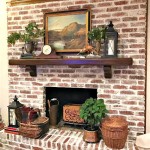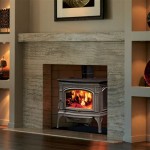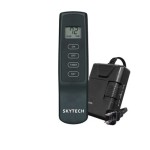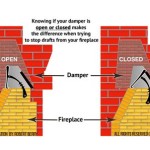Baby Proofing Your Fireplace: A Comprehensive Guide
Fireplaces, while adding warmth and ambiance to a home, can pose significant safety hazards for babies and toddlers. Their inherent design, with hard surfaces, sharp edges, and open flames (or the illusion thereof), makes them a potential source of bumps, burns, and other injuries. Therefore, meticulous babyproofing is essential to ensure a safe environment for young children. This article provides a comprehensive guide to effectively mitigating the risks associated with fireplaces when babies are present.
The primary concern is direct contact with open flames or hot surfaces, leading to burns. Even after the fire is extinguished, the bricks, stones, or metal components of the fireplace can retain significant heat for an extended period. Infants and toddlers are particularly vulnerable due to their delicate skin and limited understanding of danger. Furthermore, the hard edges and corners of the fireplace surround can cause serious injuries from falls or accidental collisions. Unsecured fireplace tools and decorative items also present choking hazards or can be pulled down, causing further risk.
Effective babyproofing involves a multi-faceted approach, encompassing protective barriers, surface padding, securing accessories, and ongoing parental vigilance. The specific measures taken should be tailored to the individual fireplace design and the child's developmental stage. A proactive and thorough approach is crucial for preventing potentially serious accidents.
1. Installing a Fireplace Safety Gate or Screen
A sturdy fireplace safety gate is arguably the most important element of babyproofing a fireplace. It creates a physical barrier that prevents children from accessing the fireplace opening and its immediate surroundings. The gate should be constructed from durable materials, such as metal or heavy-duty plastic, and designed to withstand a child's attempts to climb or pull on it.
When selecting a safety gate, several factors should be considered. The gate should be appropriately sized to fully enclose the fireplace opening, extending beyond the hearth's edges if necessary. It should also be tall enough to prevent a child from climbing over it, typically a minimum height of 28 inches is recommended. Adjustable gates are preferable, allowing for customization to fit various fireplace dimensions. Look for gates that are securely mounted to the wall, either with screws or pressure-mounting systems, ensuring stability and preventing the gate from being easily dislodged.
Pressure-mounted gates are generally easier to install, but they may not be as secure as screw-mounted options, especially for active or determined children. Screw-mounted gates provide a more permanent and robust solution, but require drilling into the wall, which may not be feasible in all situations. Carefully assess the wall material and choose the appropriate mounting hardware. Proper installation is critical for the gate's effectiveness. Follow the manufacturer's instructions meticulously and ensure that all connections are tight and secure.
Beyond the standard rectangular gates, other options are available, such as custom-built gates or free-standing fireplace screens. Custom gates offer a tailored solution for uniquely shaped fireplaces or those with irregular dimensions. Free-standing screens provide a portable barrier but may not be as secure as mounted gates, particularly if a child attempts to push or pull on them. The choice depends on the fireplace design, the desired level of security, and the homeowner's preferences.
Regularly inspect the safety gate for any signs of damage or wear. Check the hinges, latches, and mounting hardware to ensure they are in good working order. Replace or repair any damaged components promptly to maintain the gate's effectiveness. As the child grows and becomes more mobile, the gate may need to be adjusted or replaced to continue providing adequate protection.
2. Padding Sharp Edges and Corners
Even with a safety gate in place, the edges and corners of the fireplace surround can pose a risk of injury, particularly for toddlers who are still developing their coordination and balance. Sharp edges and protruding corners can cause cuts, bruises, or more serious injuries if a child falls or bumps into them. Padding these hazardous areas is an effective way to minimize the risk of injury.
A variety of padding products are available specifically designed for babyproofing. These include corner cushions, edge guards, and foam padding rolls. Corner cushions are typically made of soft, impact-absorbing materials like foam or rubber and are designed to adhere to the corners of furniture or fixtures. Edge guards are similar but are designed to cover the length of a sharp edge. Foam padding rolls can be cut to size and applied to any surface that requires cushioning.
When selecting padding materials, prioritize those that are non-toxic, durable, and easy to clean. Consider the thickness and density of the padding, choosing thicker materials for areas where a greater degree of protection is needed. Ensure that the padding adheres securely to the fireplace surround, using strong adhesive or mounting tape. Regularly check the padding to ensure it remains securely attached and replace it if it becomes loose or damaged.
The color and style of the padding can also be considered. Neutral colors are generally less conspicuous and may blend in better with the existing decor. However, brightly colored padding can also be used as a visual cue to alert children to the presence of a potential hazard. The choice depends on personal preferences and the overall aesthetic of the room.
For stone or brick fireplaces, applying padding may be more challenging due to the uneven surface. In these cases, consider using a thicker, more pliable padding material that can conform to the contours of the surface. Alternatively, a custom-made padded cover can be fabricated to fit the fireplace surround. This provides a more comprehensive and aesthetically pleasing solution.
3. Securing Fireplace Tools and Accessories
Fireplace tools, such as pokers, shovels, and tongs, can be hazardous to young children. They are often made of metal and have sharp points or edges that can cause injury. Additionally, decorative items placed on or around the fireplace, such as vases, candles, and figurines, can be pulled down or knocked over, posing a risk of cuts, bruises, or choking.
The first step in securing fireplace tools is to store them out of reach of children. This can be achieved by placing them in a storage caddy or rack that is located well away from the fireplace. If the tools must be kept near the fireplace, ensure they are securely fastened to the wall or floor using brackets or straps. This will prevent them from being easily accessed or pulled down.
Remove any decorative items that are within reach of children. If these items are essential for the fireplace's aesthetic, consider replacing them with safer alternatives, such as soft, unbreakable decorations. Secure any remaining decorative items to the fireplace surround using adhesive putty or hook-and-loop fasteners. This will prevent them from being easily dislodged if a child touches them.
Fireplace screens, while providing a barrier to the open flame, can also present a tipping hazard if not properly secured. Anchor the screen to the fireplace surround or the wall using brackets or straps. This is particularly important for free-standing screens that are not inherently stable. Regularly inspect the screen's stability and adjust the anchoring system as needed.
Keep firewood stored safely away from the fireplace and out of reach of children. Firewood can be heavy and unstable, posing a risk of injury if it falls on a child. Store firewood in a designated area, such as a wood rack or shed, that is inaccessible to children. Never allow children to play with firewood or use it as a climbing structure.
Teach children about the dangers of playing with fireplace tools and decorative items. Explain that these items are not toys and should not be touched or handled without adult supervision. Reinforce this message consistently and provide positive reinforcement when children follow the rules. Ongoing education is an essential component of creating a safe environment around the fireplace.
4. Addressing Gas Fireplace Concerns
Gas fireplaces, while generally considered more convenient than traditional wood-burning fireplaces, present unique safety concerns for babies and toddlers. These concerns primarily revolve around the glass front panel, which can become extremely hot during operation, and the potential for gas leaks.
The glass front panel of a gas fireplace can reach temperatures high enough to cause severe burns in a matter of seconds. Babies and toddlers are particularly vulnerable due to their sensitive skin and their tendency to touch surfaces out of curiosity. It is imperative to install a protective barrier that prevents children from coming into contact with the hot glass.
Specialized gas fireplace safety screens are available that are designed to attach directly to the fireplace, providing a physical barrier between the glass panel and the child. These screens are typically made of metal mesh or tempered glass and are designed to withstand high temperatures. Ensure that the screen is securely attached to the fireplace and that it covers the entire glass panel.
Even with a safety screen in place, it is important to supervise children closely when the gas fireplace is in operation. Teach them that the fireplace is hot and should not be touched. Consider placing warning stickers or signs on the fireplace to reinforce this message. Allow the fireplace to cool completely before allowing children to play near it.
Gas leaks are a serious safety hazard that can lead to asphyxiation or explosion. Install a carbon monoxide detector in the vicinity of the gas fireplace to alert you to the presence of dangerous levels of carbon monoxide. Regularly test the detector to ensure it is functioning properly. Schedule regular maintenance of the gas fireplace by a qualified technician to inspect for gas leaks and ensure proper operation.
If you suspect a gas leak, evacuate the house immediately and contact the gas company or emergency services. Do not attempt to locate or repair the leak yourself. Educate all members of the household on the signs of a gas leak, such as a rotten egg smell, and the proper procedures to follow in the event of a leak.
By addressing these specific concerns, parents can significantly reduce the risks associated with gas fireplaces and create a safer environment for their children.
In addition to the specific measures outlined above, several general safety precautions should be observed when babyproofing a fireplace. Regularly inspect the entire fireplace area for potential hazards, such as loose bricks, cracked mortar, or protruding nails. Repair any damage promptly to prevent injuries. Keep the area around the fireplace clear of flammable materials, such as curtains, rugs, and furniture. Never leave a fire unattended, even for a short period of time. Ensure that the fireplace is properly ventilated to prevent the buildup of harmful gases.
Babyproofing a fireplace is an ongoing process that requires vigilance and adaptability. As children grow and develop, their capabilities and curiosity will change, necessitating adjustments to the babyproofing measures. Regularly reassess the fireplace area and make any necessary modifications to ensure that it remains a safe environment for young children. Open communication with caregivers and other adults who interact with the child is also essential. Ensure that everyone is aware of the safety precautions and understands their role in keeping the child safe.
By implementing these comprehensive babyproofing measures and maintaining a vigilant approach, parents can create a safe and enjoyable environment around the fireplace for their children.

3 Ways To Baby Proof A Fireplace Wikihow

How To Baby Proof A Fireplace Diy Hearth Cushion Simply September

How To Baby Proof Fireplace Important Checklist

Diy Baby Proofing Your Brick Fireplace Thisaveragemom

How To Baby Proof Your Fireplace Pa Guide Proofing Home Safety

Baby Proofing Fireplace More Easy Hearth Padding Oh Love

How To Childproof Your Fireplace Baby Proof

Baby Proof The Fireplace Hearth With A Padded Bench Fosterpabedrooms Childproof Cover

How To Baby Proof Your Fireplace Reviewed

3 Ways To Baby Proof A Fireplace Wikihow








